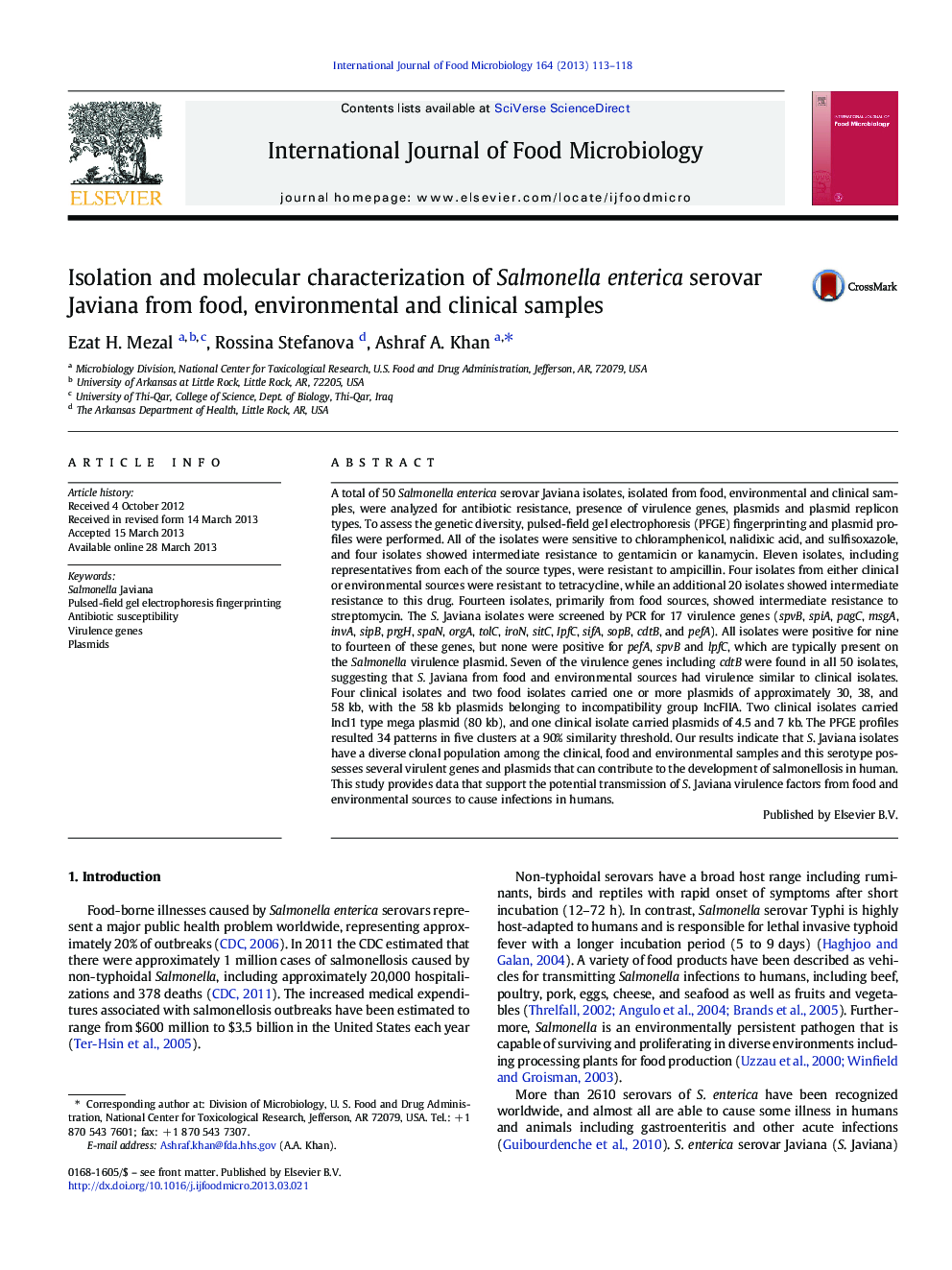| کد مقاله | کد نشریه | سال انتشار | مقاله انگلیسی | نسخه تمام متن |
|---|---|---|---|---|
| 4367195 | 1616624 | 2013 | 6 صفحه PDF | دانلود رایگان |

• Salmonella enterica serovar Javiana characterized from food, environmental and clinical samples.
• PFGE profiles resulted 34 patterns in five clusters at a 90% similarity threshold.
• Seven of the virulence genes including cdtB were found in all 50 isolates.
• S. Javiana isolates have diverse clonal population among clinical, food and environmental samples.
A total of 50 Salmonella enterica serovar Javiana isolates, isolated from food, environmental and clinical samples, were analyzed for antibiotic resistance, presence of virulence genes, plasmids and plasmid replicon types. To assess the genetic diversity, pulsed-field gel electrophoresis (PFGE) fingerprinting and plasmid profiles were performed. All of the isolates were sensitive to chloramphenicol, nalidixic acid, and sulfisoxazole, and four isolates showed intermediate resistance to gentamicin or kanamycin. Eleven isolates, including representatives from each of the source types, were resistant to ampicillin. Four isolates from either clinical or environmental sources were resistant to tetracycline, while an additional 20 isolates showed intermediate resistance to this drug. Fourteen isolates, primarily from food sources, showed intermediate resistance to streptomycin. The S. Javiana isolates were screened by PCR for 17 virulence genes (spvB, spiA, pagC, msgA, invA, sipB, prgH, spaN, orgA, tolC, iroN, sitC, IpfC, sifA, sopB, cdtB, and pefA). All isolates were positive for nine to fourteen of these genes, but none were positive for pefA, spvB and lpfC, which are typically present on the Salmonella virulence plasmid. Seven of the virulence genes including cdtB were found in all 50 isolates, suggesting that S. Javiana from food and environmental sources had virulence similar to clinical isolates. Four clinical isolates and two food isolates carried one or more plasmids of approximately 30, 38, and 58 kb, with the 58 kb plasmids belonging to incompatibility group IncFIIA. Two clinical isolates carried IncI1 type mega plasmid (80 kb), and one clinical isolate carried plasmids of 4.5 and 7 kb. The PFGE profiles resulted 34 patterns in five clusters at a 90% similarity threshold. Our results indicate that S. Javiana isolates have a diverse clonal population among the clinical, food and environmental samples and this serotype possesses several virulent genes and plasmids that can contribute to the development of salmonellosis in human. This study provides data that support the potential transmission of S. Javiana virulence factors from food and environmental sources to cause infections in humans.
Journal: International Journal of Food Microbiology - Volume 164, Issue 1, 3 June 2013, Pages 113–118